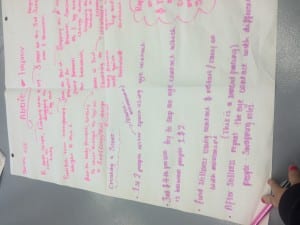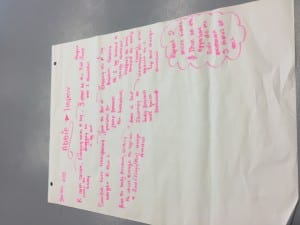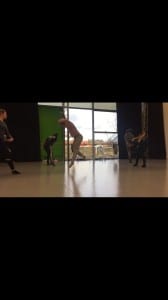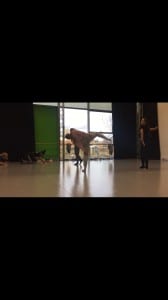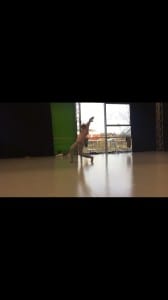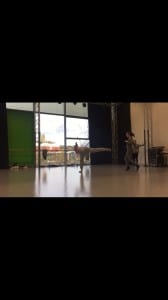- Through out the module we did lots of different tasks including RSVP, opening and closing scores and many more, these tasks where all made by professional practitioners that we read in our readings and then in the classes would try out our self. All of these task helped cut out a lot of out habitual movements when improvising and also opened a whole new vocabulary of movement to us. For example pedestrianized movements and playing around with just day to day movements like walking and siting down and how you could have fun with that than just typically doing ” dance movements” and how these movement types looked against each other.. These were all activities on how we could create relationships and becoming more comfortable dancing with each other and as a group as well.
- Idefinitely feel like through the module I have gained different ways of starting when it comes to improvisiation and jamming, normally in the first few lessons I would enter the space and dance straight away mostly on my own but thought the 10 weeks of improvisation I’ve learnt how that you can walk around the space get a feel of what the space vibe is then start whether it was starting alone and creating material that way or if it was t find somebody and create relationships and group and partner work between each other. I also gained that throughout the module that improvising can start whilst your out of the space and you can enter whilst moving straight away or even enter bringing another person into the space also. Starting and investigating different ways allowed me to explore different movements to allow me to perform these starting point its allowed my movement vocabulary to expand.
- My movement vocabularywhen it comes to working with other people has expanded greatly through out this module. Is really allowed me to look at groups and ensembles and allowed me to think where I could fit into the groups how I could expand and carrying on movement that was already being created in the space or even how I could go into that ensemble and disturb the group how could I disturb the group so its no longer a group performing improvisation together and was solos again. My awareness in the space itself has become I feel a is strong point for me because although we are all either performing or copying or making movement bigger or smaller and so on you have to be aware of everybody in the space because its improvisation your not to know what sombody is going to do beside you or around you so have to have the awareness of where people are, for example somebody walking backwards and they where about to knock into somebody just guiding them or turning them into s different different makes everyone and the space more save and everyone more aware.
- At the beginning of the module I felt like I had a basic understanding of compositional understandingbut then I feel like through the module I gained more experience with this when jamming in bothlessons with Kayla on a Monday and with Kirsty on a Thursday, I feel like working with other people and creating relationships through improvisation has helped a lot to expand my compositional understanding skills.
- Throughout my years at university and going onto further education I will take on the skills I have learnedin this module into further practicesI do for example in second year this will come handy when we go into contact improvisation and when eventually you finish you career and go into auditions and they ask you to improvise you will have the knowledge and understanding of how to improvise. So therefore I will take everything I’ve learned in the last 10 weeks into my further career and further modules.
